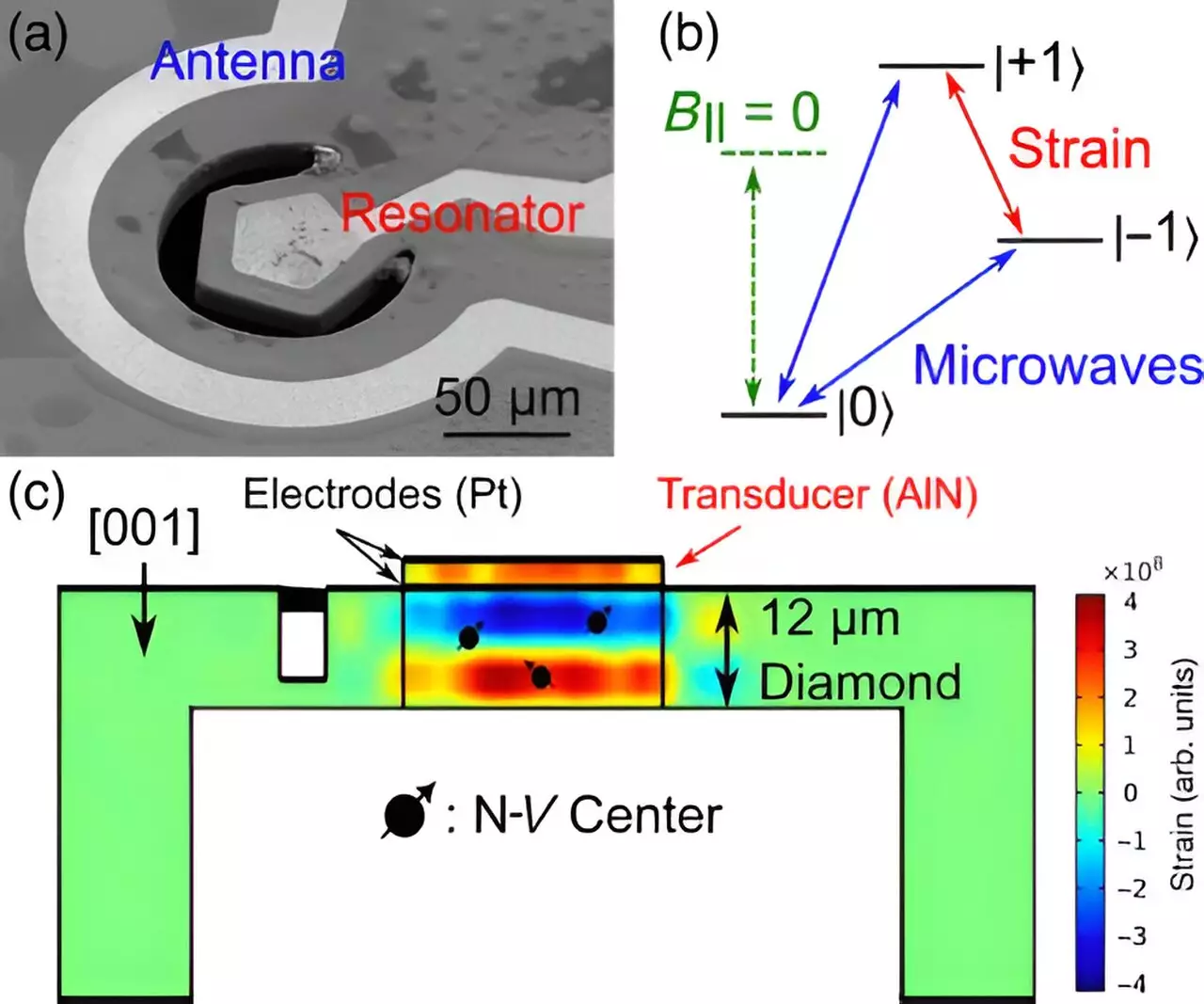In the rapidly evolving realm of quantum technology, diamonds have emerged as the pinnacle of materials suited for developing advanced quantum sensors. Gregory Fuchs, a prominent professor at Cornell University, leads a dynamic team of scientists who have made groundbreaking strides in unlocking the full potential of diamonds by meticulously capturing their microscopic vibrations. This research, involving collaboration from esteemed institutions like the U.S. Department of Energy’s Argonne National Laboratory, Purdue University, and Cornell itself, has brought forth a revolutionary understanding of the relationship between atomic vibrations and quantum properties.
By utilizing sound waves to stimulate diamonds, the research team successfully produced X-ray images that delineate the vibrational behavior of diamond atoms. This two-pronged approach not only allowed for precise measurements of atomic expansion and compression relative to sound wave frequencies but also established a crucial link between atomic strain and spin. Atoms exhibit a property known as spin, which plays a pivotal role in quantum information encoding. The research team revealed a systematic guide: specific acoustic manipulations of diamond would correspondingly affect the atomic spin, forming a predictable pattern crucial for the future of quantum sensing.
Published in the esteemed journal Physical Review Applied, this study represents a groundbreaking achievement—the first instance where the correlation between spin and strain in diamond was quantified at gigahertz frequencies. This landmark research contributes to an overarching objective within the quantum science community of establishing a definitive connection between atomic strain and spin across various materials. Notably, previous studies at Argonne and the University of Chicago have already explored similar correlations in silicon carbide, another material gaining traction in quantum applications.
The team’s work exemplified the power of collaboration despite geographical divides. While Fuchs’s lab at Cornell measured spin responses using innovative devices developed with Purdue, strain measurements were conducted at Argonne. This required Cornell graduate student Anthony D’Addario to travel 700 miles to access the Advanced Photon Source (APS)—a cutting-edge facility renowned for its ability to generate X-ray images that scrutinize material behavior at the atomic level.
Utilizing high-resolution imaging technology, the scientific team targeted a particularly significant site within the diamond known as the nitrogen vacancy (NV) center. This defect, characterized by a missing carbon atom flanked by a nitrogen atom, serves as a fundamental building block for quantum sensors. By capturing detailed strobe-like images of atomic movement around NV centers, researchers achieved a remarkable accuracy, measuring atomic displacements to an accuracy of one part in 1,000.
Fuchs and his team’s research was highlighted by a significant achievement in data analysis that led to a novel relationship between spin and strain in diamond. The most thrilling aspect of the study was the validation of theoretical predictions through practical measurements, reinforcing the reliability of their findings and providing a new number that successfully correlated spin and strain.
While traditional methods of spin manipulation have predominantly relied on electromagnetic waves, this research sheds light on acoustic waves as a powerful alternative. Not only do acoustic waves offer unique mechanisms for manipulating spin, but they also provide unexpected protection for fragile quantum information from environmental interference. The nuanced action of sound waves appears to minimize disturbances that can lead to decoherence—an effect that can compromise quantum information integrity.
The benefits of employing acoustic methods to manipulate spin extend to miniaturization, a critical factor in the design of quantum devices. With acoustic waves having wavelengths comparable to the width of a human hair, multiple devices can be integrated into confined setups without the risk of signal interference. This density enables more versatile and powerful applications compared to their longer electromagnetic counterparts.
Fuchs emphasizes diamond’s extraordinary attributes, asserting that it is widely recognized as the ideal host for quantum information due to its stability, capability to operate at room temperature, and long retention times for information. “For quantum sensors, diamond reigns supreme,” he states unequivocally, reinforcing the material’s prestigious status.
The successful outcomes of this research exemplify the importance of cross-disciplinary collaboration in advancing the understanding of quantum phenomena. As Fuchs articulates, many intricate aspects can influence the behavior of quantum systems, necessitating a thorough examination of the relationships between various properties, such as spin and strain. The initiative, supported in part by Q-NEXT—a DOE-led National Quantum Information Science Research Center—embodies this collaborative spirit, aiming to explore the complexities of quantum materials more comprehensively.
The recent advancements in diamond-based quantum sensors signify an impressive leap forward in the field of quantum information science. By bridging the gap between atomic strain and spin, this research lays the groundwork for the next generation of quantum applications in medicine, navigation, and beyond, promising a future filled with unprecedented precision and capability.


Leave a Reply